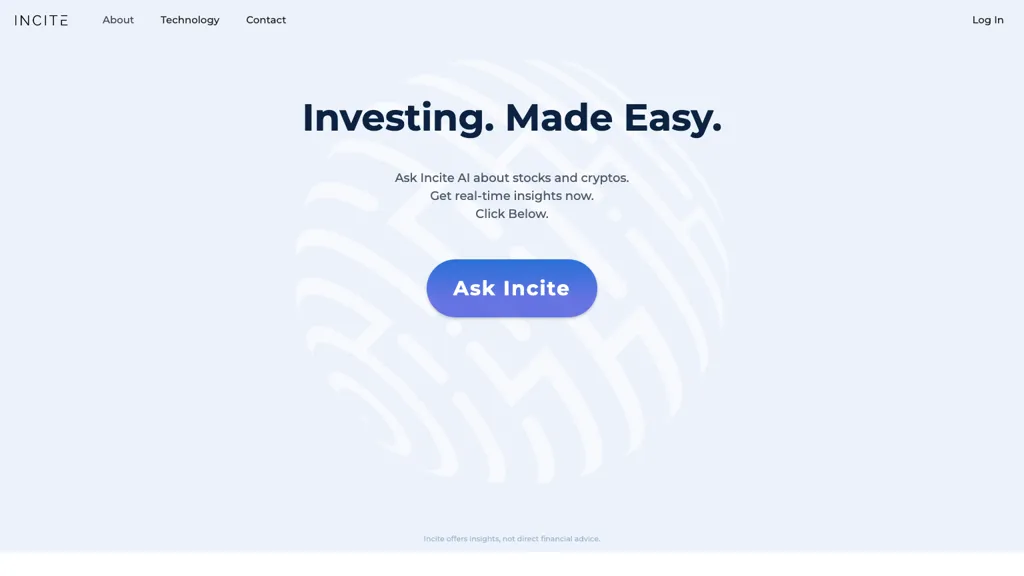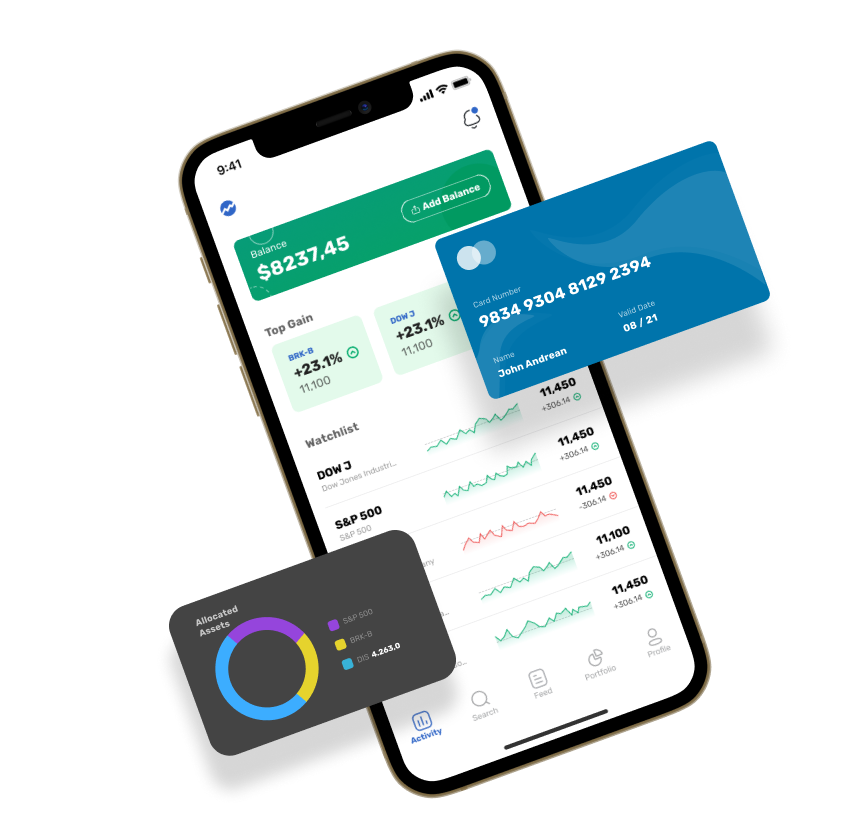20 New Info On Choosing AI Stock Trading Analysis Websites
20 New Info On Choosing AI Stock Trading Analysis Websites
Blog Article
Top 10 Tips On How To Assess The Quality Of Data And Its Sources For Ai-Powered Stock Analysis And Forecasting Trading Platforms
To ensure that you are providing accurate and reliable data, it's important to check the sources and data that are used by AI trading and stock prediction platforms. Poor data can result in inaccurate predictions, losses of money, and a lack of trust. Here are the top 10 tips for evaluating sources and data quality:
1. Verify the data sources
Find out the source of the data Make sure the platform uses reputable and well-known providers of data (e.g., Bloomberg, Reuters, Morningstar, or exchanges like NYSE, NASDAQ).
Transparency - The platform should be open about the sources of its data and should regularly update them.
Avoid relying on a single source: reliable platforms will frequently combine data from different sources to reduce the chance of bias.
2. Assess Data Freshness
Data that is delayed or real-time Find out if the platform provides actual-time or delayed data. Real-time trading requires real-time data, while delayed data will suffice in long-term analysis.
Check the frequency of updating information (e.g. hourly minutes by minutes or even daily).
Consistency of historical data: Ensure that historical data is clear of any gaps or anomalies.
3. Evaluate Data Completeness
Look for missing information: Check for missing tickers or financial statements as well for gaps in data from the past.
Coverage. Check that your platform has a wide range of markets, stocks, and indices that are relevant to your trading strategy.
Corporate actions - Check if the platform account stocks splits. Dividends. mergers.
4. Accuracy of Test Data
Cross-verify your data: Compare the data of your platform against other trustworthy sources.
Error detection: Look for outliers and incorrect values or financial metrics that aren't in line with.
Backtesting: You may use the historical data to evaluate trading strategies. Check if they match your expectations.
5. Granularity of data is determined
Level of detail: Ensure the platform offers granular data like intraday prices, volume bid-ask spreads, as well as the depth of an order book.
Financial metrics - Make sure to check whether there is a detailed financial statement (income statements, balance sheets, cash flows) and key ratios (P/E/P/B/ROE and so on.). ).
6. Check for Data Cleaning & Preprocessing
Data normalization - Ensure the platform normalizes your data (e.g. making adjustments for dividends or splits). This helps help ensure the consistency.
Outlier handling: Check how the platform handles outliers and anomalies within the data.
Incorrect data Make sure to check if your system uses solid methods to fill in the missing data.
7. Verify data for consistency
Aligning data with the time zone: To avoid discrepancies, ensure that the data in all files is synced with each other.
Format consistency - See whether data are displayed in the same format (e.g. units, currency).
Cross-market consistency : Verify data alignment across markets or exchanges.
8. Evaluate the Relevance of Data
Relevance to your strategy for trading The data you are using is compatible with the style you prefer to use in trading (e.g. technical analysis or qualitative modeling or fundamental analysis).
Features Selection: Find out whether the platform offers useful features, such as economic indicators, sentiment analysis and news information that will enhance predictions.
Examine Data Security Integrity
Data encryption: Make sure your platform has encryption in place for data transmission and storage.
Tamper-proofing: Ensure that the data isn't manipulated or modified by the platform.
Security: Make sure that the platform meets regulations on data protection (e.g. GDPR, CCPA).
10. Test the AI model of the platform transparency
Explainability. Be sure to understand how the AI uses data to make predictions.
Examine for detection of bias. The platform should actively monitor and mitigate any biases that may exist within the model or data.
Performance metrics: Assess the accuracy of the platform through analyzing its history, performance metrics, and recall metrics (e.g. precision and accuracy).
Bonus Tips
User feedback and reputation Review reviews of users and feedback to evaluate the platform's reliability.
Trial period: Use a free trial or demo to test the data quality of the platform and features before committing.
Customer support: Make sure your platform has a robust support for problems related to data.
Follow these tips to assess the source of data and the quality of AI platform for stock predictions. Make educated decisions regarding trading using this data. Have a look at the recommended inciteai.com AI stock app for site recommendations including incite, ai stock picker, ai stock picker, ai for stock predictions, ai for investing, ai investing app, ai investing platform, ai stock market, options ai, ai for stock trading and more.
Top 10 Tips To Assess The Transparency Of Platforms For Trading Stocks
Transparency can be an important factor when making a decision about AI trading and stock predictions platforms. Transparency lets users verify predictions, be confident in the platform and know how it operates. These are the top ten tips to evaluate the credibility of these platforms:
1. AI Models explained in Clear Terms
Tip: Make sure the platform is clear about the AI models and algorithms used to make predictions.
What's the reason? By understanding the technology, users can determine its reliability and limitations.
2. Data sources that are disclosed
Tip: Make sure the platform discloses the sources of data it relies on.
The platform uses reliable and comprehensive data when you have access to the sources.
3. Performance Metrics and Backtesting Results
Tip: Be sure to seek out transparent reports on performance metrics, such as accuracy rates and ROI, as well as the results of backtesting.
It will also allow users to evaluate the efficacy of the platform as well as its past performance.
4. Real-time updates and notifications
Tips. Find out if your platform can provide real-time information as well as notifications about trades and changes in the system, like trading forecasts.
The reason is that real-time transparency gives users constant information about critical actions.
5. Limitations and Open Communication
TIP: Check if your platform explains the risks and limitations of the trading strategies it uses and its predictions.
Why: Acknowledging limitations builds confidence and allows users to make informed choices.
6. User Access to Raw Data
Tip : Assess whether users have access to raw data as well as intermediate results that are utilized to build AI models.
Why? Because the raw data is accessible to anyone who wants to conduct their own analysis.
7. Transparency and honesty in costs and fees
Tips: Ensure that all subscription fees, charges and possible cost-savings are clearly disclosed on the platform.
Reason: Transparent pricing helps avoid cost-insane surprises and helps build confidence.
8. Regularly scheduled reporting and audits
Find out if your platform is regularly audited by third parties or you can find reports about its performance.
Why: Independent Verification adds credibility and guarantees accountability.
9. Explainability in Predictions
Tip Check to determine if there is any description of how the platform makes specific predictions and suggestions (e.g. feature priority and decision trees).
Why? Explainability lets users to gain insight into the rationale behind AI-driven actions.
10. User Feedback Channels and Support
Tip - Check if the platform provides open ways to receive feedback and assistance from users, and whether they provide a clear response to users' concerns.
Why? Responsive communication demonstrates a commitment towards transparency and user satisfaction.
Bonus Tip: Regulatory Compliance
Ensure the platform complies with the relevant financial regulations and discloses its compliance status. This increases the transparency and credibility.
When you carefully evaluate these elements, it is possible to determine if an AI-based stock prediction or trading system operates transparently. This lets you make informed decisions and build confidence in the capabilities of AI. Follow the top invest ai examples for website recommendations including best ai penny stocks, ai options trading, how to use ai for stock trading, ai in stock market, ai stock analysis, ai copyright signals, best ai trading platform, investing with ai, ai stock predictions, can ai predict stock market and more.